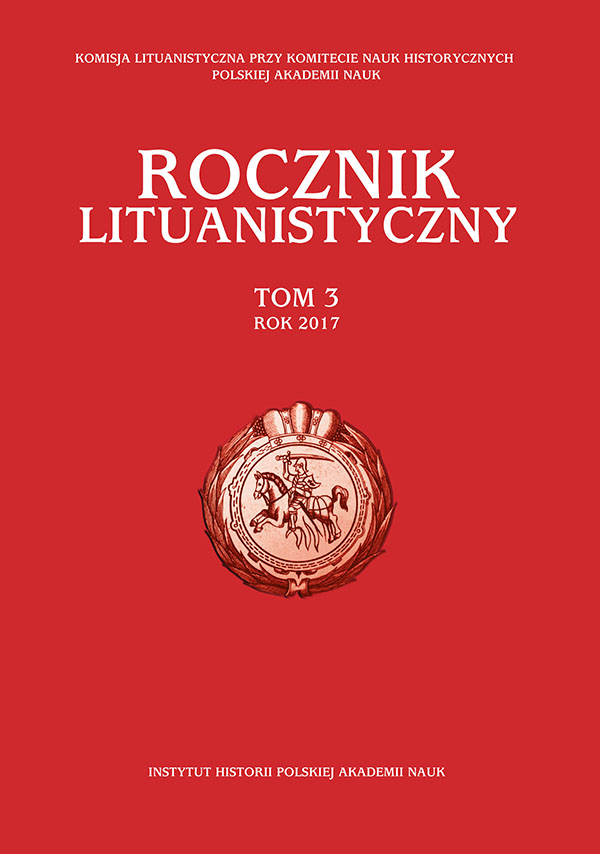Regionalna specyfika pojęcia granic i pograniczy Wielkiego Księstwa Litewskiego w XV–XVI wieku
The Regional Specificity of the Concept of Borders and Borderlands of the Grand Duchy of Lithuania in the Fifteenth and Sixteenth Centuries
Author(s): Laima BucevičiūtėSubject(s): Social history, 15th Century, 16th Century, The Ottoman Empire
Published by: Instytut Historii im. Tadeusza Manteuffla Polskiej Akademii Nauk
Keywords: Grand Duchy of Lithuania; Poland; Livonia; Teutonic Order; Prussia; Muscovy; Tatar hordes; Ottoman Empire; boundaries; frontiers; space; territory; colonization; prairie;
Summary/Abstract: The aim of this article is to present the concept and specificity of the borders and borderlands of Lithuania and its neighbours in the fifteenth and sixteenth centuries. The phases of the development of the Lithuanian state borders are presented and the case of Lithuanian border evolution is discussed in the context of the theory of border development. The states that bordered with the Grand Duchy of Lithuania offered and constructed a different neighbourhood model in terms of regional cultural approach. Linear state borders were finally formed after fulfilling the programme of military, socio-economic and cultural-ideological conquest of the area. The linear border model is applicable only to the northern and western borders of Lithuania. Internal colonization is regarded as the most important precondition for the creation of a linear border.
Journal: Rocznik Lituanistyczny
- Issue Year: 2017
- Issue No: 3
- Page Range: 7-25
- Page Count: 19
- Language: Polish

